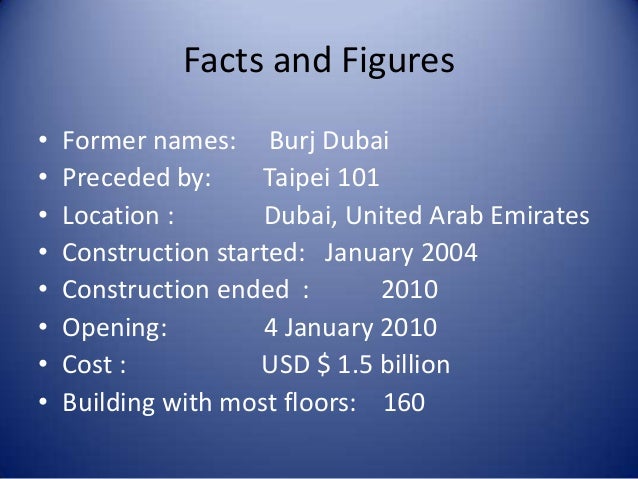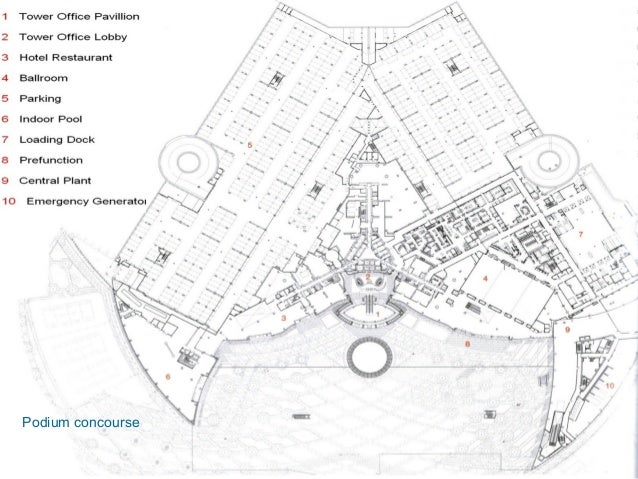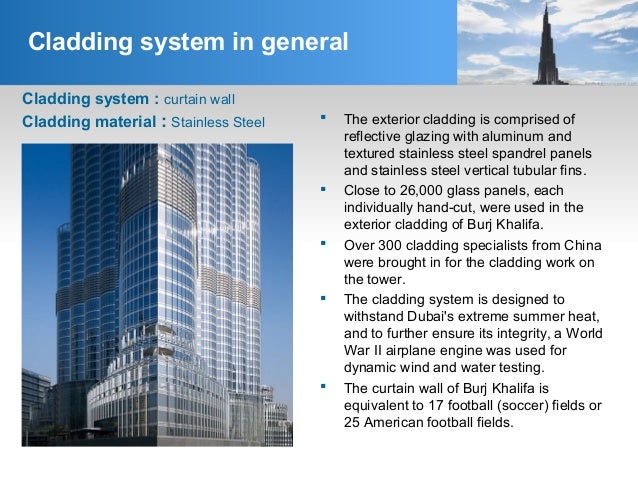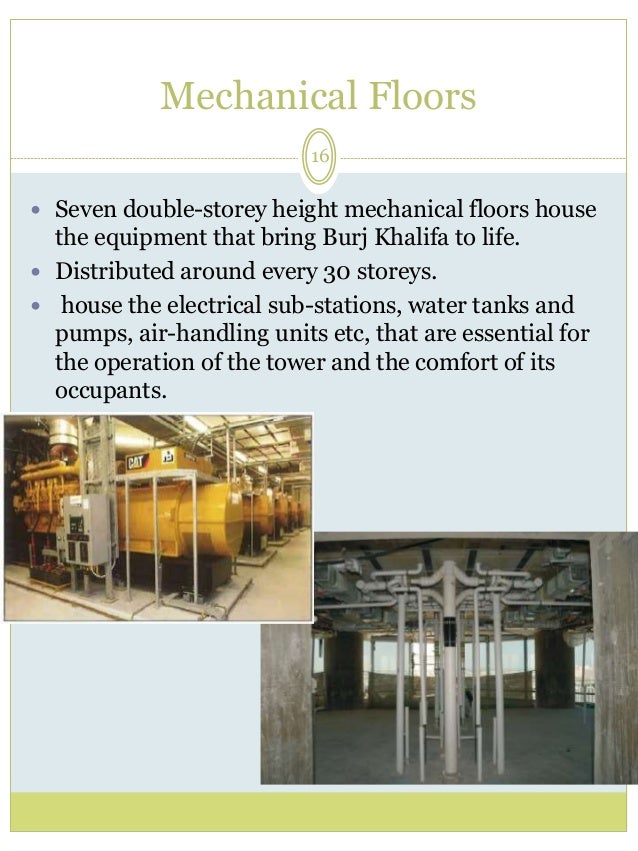Burj Khalifa:- The Skyscraper Building in Burj Dubai
Burj Khalifa
More than just the world's
tallest building, Burj Khalifa is an unprecedented example of international
cooperation, symbolic beacon of progress, and an emblem of the new, dynamic and
prosperous Middle East.
It is also tangible proof of
Dubai's growing role in a changing world. In fewer than 30 years, this city has
transformed itself from a regional centre to a global one. This success was not
based on oil reserves, but on reserves of human talent, ingenuity and
initiative. Burj Khalifa embodies that vision.
Mr Mohamed Alabbar, Chairman,
Emaar Properties, said: "Burj Khalifa goes beyond its imposing physical
specifications. In Burj Khalifa, we see the triumph of Dubai's vision of
attaining the seemingly impossible and setting new benchmarks. It is a source
of inspiration for every one of us in Emaar. The project is a declaration of
the emirate's capabilities and of the resolve of its leaders and people to work
hand in hand on truly awe-inspiring projects.
Emaar had but one inspiration,
the unflagging enthusiasm set in motion by His Highness Sheikh Mohammed Bin
Rashid Al Maktoum, Vice President and Prime Minister of the UAE and Ruler of
Dubai, who inspires us to reach for the stars.
COMPONENTS
At the Top
Burj Khalifa SKY____________________
Levels 148 & 125
A LEVEL ABOVE BREATHTAKING
Soaring high at 555 meters, At
the Top, Burj Khalifa SKY is fittingly Dubai’s most iconic destination. Get
ready to enjoy exclusive access to the redefined, highest outdoor observatory
in the world, spread across levels 148 and 125 of Burj Khalifa. Your journey
begins when you step into the At the Top, Burj Khalifa SKY lounge, from where
you will be personally escorted to a dedicated elevator. Inside, watch in
amazement as specially designed projections give you the feeling of flying over
global landmarks as you ascend to Level 125.
Corporate Suites
Levels 112 - 154
OFFICES WITH THE MOST INSPIRING
VIEWS
The ultimate business destination
for corporate high-flyers, The Corporate Suites open new doors to growth in a
central location in one of the world's fastest growing cities. Located on the
highest levels of the tower, The Corporate Suites occupy 37 floors. The
entrance lobby is at the Concourse of the tower featuring striking art
specially commissioned for the tower. In addition to valet parking for guests and
visitors, express lifts take visitors directly to a lounge lobby at Level 123
that also serves as a meet-and-greet point.
At the Top Burj Khalifa
Level 124
YOUR CHANCE TO ENTER THE RECORD
BOOKS
The high point of any Khalifa
experience is the view from At The Top, Burj Khalifa's observation deck.
Located on level 124 of the world's tallest tower, this observatory is destined
to be the highlight of any visit to the Middle East.Throughout the journey to
the top, visitors are entertained by a multi-media presentation of the exotic
history of Dubai and the marvel of Burj Khalifa.
At.Mosphere
Level 122
FINE DINING WITH BREATHTAKING
VIEWS OF THE CITY AND BEYOND
At 442 metres above the city, the
height of fine dining meets relaxed social interaction on Level 122 with a trio
of stylish locations, from the contemporary elegance of the restaurant and the
exclusive appeal of the private dining room to the casual yet sophisticated
lounge.
From the moment you step into the
express elevator to being seated at a window table with awe-inspiring panoramas
of Downtown Dubai and the Arabian Gulf, the scene is set for an unforgettable
culinary experience; and with a reputation for consistently innovative menus
using the finest internationally sourced ingredients, Executive Chef Jerome
Lagarde’s 20 years’ experience in acclaimed Michelin-starred restaurants
guarantees a meal every bit as memorable as the view.
The Residences
Levels 19 - 108
WORLD'S MOST PRESTIGIOUS ADDRESS
The world's most-prestigious
address is home to a select few. With 900 residences including studios, one-,
two-, three- and four-bedroom suites, The Residences at Burj Khalifa are
designed for the connoisseur. High living becomes a reality where the homes are
located on levels 19 to 108 of Burj Khalifa.
Burj Khalifa has a rich array of
amenities and services that provide residents and their guests an unparalleled
lifestyle experience. Exclusive Sky Lobbies on Levels 43, 76 and 123 include
state-of-the-art fitness facilities, indoor/outdoor swimming pools, Jacuzzis
and a recreation room for gatherings and events.
Armani Hotel Dubai
Levels 38 and 39
STAY WITH ARMANI
Located on Levels 38 and 39 the
Armani Signature Suites exemplify the Armani design philosophy from the
distinctive circular entrance hall with its stylish powder room, to the private
dining room which offer city, desert or Arabian Gulf views.
Exclusively occupying Level 39,
the one-of-a-kind Armani Dubai Suite offers an unparalleled 390 square metres
of living space personally designed by Giorgio Armani.
Armani Residences
From levels 9 to 16
A WORLD OF SOPHISTICATED BEAUTY
Personally designed by Giorgio
Armani, Armani Residences are a reflection of his personal approach to elegance
and unique style philosophy. Armani's seamless, understated style is cleverly
combined to maximise on space and showcase furnishings by focusing on the
compatility of materials, form and lighting within a superb, softly luminous
setting.
The high-quality furnishings are
complemented by a unique range of exclusively designed accessories by
Armani/Casa, bringing together innumerable individual elements to create a
residence which is stylish, practical and, above all, synonymous with the
Armani reputation for excellence.
Armani Hotel Dubai
Concourse to Level 8
STAY WITH ARMANI
Soaring high above Downtown Dubai
in the iconic Burj Khalifa, the world’s tallest building, Armani Hotel Dubai is
the world’s first hotel designed and developed by Giorgio Armani. Reflecting
the pure elegance, simplicity and sophisticated comfort that define Armani’s
signature style, the hotel is the realisation of the designer’s long-held dream
to bring his sophisticated style to life in the most complete way and offer his
customers a Stay with Armani experience. Every detail in the hotel bears the
Armani signature, beginning with the warm Italian-style hospitality and moving
to each element of the design from the Eramosa stone floors to the zebrawood
panels, bespoke furnishings and personally designed hotel amenities.

FACTS & FIGURES
Bringing Burj Khalifa to life required a
combination of visionary ideals and solid science. In the process, the project
amassed an awe-inspiring number of facts, figures, and statistics.
World Records
At over 828 metres (2,716.5 feet) and more than 160
stories, Burj Khalifa holds the following records:
o
Tallest building in the world
o
Tallest free-standing structure in the world
o
Highest number of stories in the world
o
Highest occupied floor in the world
o
Highest outdoor observation deck in the world
o
Elevator with the longest travel distance in the
world
o
Tallest service elevator in the world
Tallest of the Supertall
Not only is Burj Khalifa the world’s tallest
building, it has also broken two other impressive records: tallest structure,
previously held by the KVLY-TV mast in Blanchard, North Dakota, and tallest
free-standing structure, previously held by Toronto’s CN Tower. The
Chicago-based Council on Tall Buildings and Urban Habitat (CTBUH) has
established 3 criteria to determine what makes a tall building tall. Burj
Khalifa wins by far in all three categories.
Height to architectural top
Height is measured from the level of the lowest,
significant, open-air, pedestrian entrance to the architectural top of the
building. This includes spires, but does not include antennae, signage,
flagpoles or other functional-technical equipment. This measurement is the most
widely used and is used to define the Council on Tall Buildings and Urban
Habitat rankings of the Tallest Buildings in the World.
Highest occupied floor
Height is measured from the level of the lowest,
significant, open-air, pedestrian entrance to the highest continually occupied
floor within the building. Maintenance areas are not included.
Height to tip
The central core emerges at the top and culminates
in a sculpted spire. A Y-shaped floor plan maximizes views of the Arabian Gulf.
Viewed from the base or the air, Burj Khalifa is evocative of the onion domes
prevalent in Islamic architecture.
Wind Tunnel Testing
Over 40 wind tunnel tests were conducted on Burj
Khalifa to examine the effects the wind would have on the tower and its
occupants. These ranged from initial tests to verify the wind climate of Dubai,
to large structural analysis models and facade pressure tests, to micro-climate
analysis of the effects at terraces and around the tower base. Even the
temporary conditions during the construction stage were tested with the tower
cranes on the tower to ensure safety at all times.
Stack effect or chimney effect is a phenomenon that
effects super-tall building design, and arises from the changes in pressure and
temperature with height. Special studies were carried on Burj Khalifa to
determine the magnitude of the changes that would have to be dealt with in the
building design.
Floor Plan
Concourse level to level 8 and level 38 and 39 will
feature the Armani Hotel Dubai. Levels 9 to 16 will exclusively house luxurious
one and two bedroom Armani Residences.
Floors 45 through 108 are private ultra-luxury
residences. The Corporate Suites occupy fill most of the remaining floors,
except for level 122 which houses At.mosphere and level 124, the tower's
public observatory, At the Top, Burj Khalifa.
For the convenience of home owners, the tower has
been divided in to sections with exclusive Sky Lobbies on Levels 43, 76 and 123
that feature state-of-the-art fitness facilities including a Jacuzzis on Level
43 and 76. The Sky Lobbies on 43 and 76 additionally house swimming pools and a
recreational room each that can be utilized for gatherings and lifestyle
events. Offering an unparalleled experience, both pools open to the outside
offering residents the option of swimming from inside to the outside balcony.
Other facilities for residents include a Residents'
Library, and Lafayette Gourmet, a gourmet convenience store and meeting place
for the residents. Valet parking is provided for guests and visitors.
Interiors
The interior design of Burj Khalifa public areas
was also done by the Chicago office of Skidmore, Owings & Merrill LLP and
was led by award-winning designer Nada Andric. It features glass, stainless
steel and polished dark stones, together with silver travertine flooring,
Venetian stucco walls, handmade rugs and stone flooring. The interiors were
inspired by local culture while staying mindful of the building's status as a
global icon and residence.
Artwork
Over 1,000 pieces of art from prominent Middle
Eastern and international artists adorn Burj Khalifa and the surrounding
Mohammed Bin Rashid Boulevard. Many of the pieces were specially commissioned
by Emaar to be a tribute to the spirit of global harmony. The pieces were
selected as a means of linking cultures and communities, symbolic of Burj
Khalifa being an international collaboration.
Construction
Excavation work began for Burj Khalifa in January
2004 and over the ensuing years to its completion, the building passed many
important milestones on its goal to become the tallest man-made structure the
world has ever seen. In just 1,325 days since excavation work started in
January, 2004, Burj Khalifa became the tallest free-standing structure in the
world.
Construction Highlights
Over 45,000 m3 (58,900 cu yd) of concrete, weighing
more than 110,000 tonnes were used to construct the concrete and steel
foundation, which features 192 piles buried more than 50 m (164 ft) deep. Burj
Khalifa's construction will have used 330,000 m3 (431,600 cu yd) of concrete
and 39,000 tonnes (43,000 ST; 38,000 LT) of steel rebar, and construction will
have taken 22 million man-hours.
Exterior cladding of Burj Khalifa began in May 2007
and was completed in September 2009. The vast project involved more than 380
skilled engineers and on-site technicians. At the initial stage of
installation, the team progressed at the rate of about 20 to 30 panels per day
and eventually achieved as many as 175 panels per day.
The tower accomplished a world record for the
highest installation of an aluminium and glass façade, at a height of 512
metres. The total weight of aluminium used on Burj Khalifa is equivalent to
that of five A380 aircraft and the total length of stainless steel bull nose
fins is 293 times the height of Eiffel Tower in Paris.
In November, 2007, the highest reinforced concrete
corewalls were pumped using 80 MPa concrete from ground level; a vertical
height of 601 metres. Smashing the previous pumping record on a building of
470m on the Taipei 101; the world’s second tallest tower and the previous world
record for vertical pumping of 532 metres for an extension to the Riva del
Garda Hydroelectric Power Plant in 1994. The concrete pressure during pumping
to this level was nearly 200 bars.
The amount of rebar used for the tower is 31,400
metric tons - laid end to end this would extend over a quarter of the way
around the world.
Burj Khalifa Construction Timeline
January 2004
|
Excavation started
|
February 2004
|
Piling started
|
March 2005
|
Superstructure started
|
June 2006
|
Level 50 reached
|
January 2007
|
Level 100 reached
|
March 2007
|
Level 110 reached
|
April 2007
|
Level 120 reached
|
May 2007
|
Level 130 reached
|
July 2007
|
Level 141 reached
world's tallest building |
September 2007
|
Level 150 reached
world's tallest free-standing structure |
April 2008
|
Level 160 reached
world's tallest man-made structure |
January 2009
|
Completion of spire
Burj Khalifa tops out |
September 2009
|
Exterior cladding competed
|
January 2010
|
Official launch ceremony
|
While it is superlative in every respect, it is the
unique design of Burj Khalifa that truly sets it apart. The centrepiece of this
new world capital attracted the world's most esteemed designers to an invited
design competition.
Ultimately, the honour of designing the world's
tallest tower was awarded to the global leader in creating ultra-tall
structures, the Chicago office of Skidmore, Owings & Merrill LLP (SOM) with
Adrian Smith FAIA, RIBA, consulting design Partner. The selected design was
subject to an extensive peer review program to confirm the safety and
effectiveness of the structural systems.
Architecture
The architecture features a triple-lobed footprint,
an abstraction of the Hymenocallis flower. The tower is composed of three
elements arranged around a central core. The modular, Y-shaped structure, with
setbacks along each of its three wings provides an inherently stable
configuration for the structure and provides good floor plates for residential.
Twenty-six helical levels decrease the cross section of the tower incrementally
as it spirals skyward.
Art & Design at
Burj Khalifa
urj Khalifa is not only a tribute to architecture
excellence but also a tribute to extraordinary design and art. Over 1000 works
of art can be found throughout Burj Khalifa, created by an international roster
of artists in a plethora of mediums, from oil painting to photography and
sculpture. The mix of contemporary and specially commissioned artworks are used
as subtle and inspiring way-finding methods, with no artwork repeated in the
tower. The art on show in Burj Khalifa focuses on the places where people
gather in the building and also works as a metaphor of diversity within a
global society.
To strengthen Burj Khalifa’s position as an iconic
Art & Design hub, an ongoing programme of Art & Design projects and
events will be taking place throughout the year.
We invite you to check out the latest news on Art
& Design at the world’s tallest tower.
Structural Elements
It is an understatement to say
that Burj Khalifa represents the state-of-the-art in building design. From
initial concept through completion, a combination of several important
technological innovations and innovation structural design methods have
resulted in a superstructure that is both efficient and robust.

Foundation
The superstructure is supported
by a large reinforced concrete mat, which is in turn supported by bored
reinforced concrete piles. The design was based on extensive geotechnical and
seismic studies. The mat is 3.7 meters thick, and was constructed in four
separate pours totaling 12,500 cubic meters of concrete. The 1.5 meter diameter
x 43 meter long piles represent the largest and longest piles conventionally
available in the region. A high density, low permeability concrete was used in
the foundations, as well as a cathodic protection system under the mat, to
minimize any detrimental effects form corrosive chemicals in local ground
water.

Podium
The podium provides a base
anchoring the tower to the ground, allowing on grade access from three
different sides to three different levels of the building. Fully glazed entry
pavilions constructed with a suspended cable-net structure provide separate
entries for the Corporate Suites at B1 and Concourse Levels, the Burj Khalifa
residences at Ground Level and the Armani Hotel at Level 1.

Exterior Cladding
The exterior cladding is
comprised of reflective glazing with aluminum and textured stainless steel
spandrel panels and stainless steel vertical tubular fins. Close to 26,000
glass panels, each individually hand-cut, were used in the exterior cladding of
Burj Khalifa. Over 300 cladding specialists from China were brought in for the
cladding work on the tower. The cladding system is designed to withstand
Dubai's extreme summer heat, and to further ensure its integrity, a World War
II airplane engine was used for dynamic wind and water testing. The curtain
wall of Burj Khalifa is equivalent to 17 football (soccer) fields or 25
American football fields.
Structural System
In addition to its aesthetic and functional
advantages, the spiraling “Y” shaped plan was utilized to shape the structural
core of Burj Khalifa. This design helps
to reduce the wind forces on the tower, as well as to keep the structure simple
and foster constructability. The structural system can be described as a
“buttressed core”, and consists of high performance concrete wall construction.
Each of the wings buttress the others via a six-sided central core, or
hexagonal hub. This central core provides the torsional resistance of the
structure, similar to a closed pipe or axle. Corridor walls extend from the
central core to near the end of each wing, terminating in thickened hammer head
walls. These corridor walls and hammerhead walls behave similar to the webs and
flanges of a beam to resist the wind shears and moments. Perimeter columns and
flat plate floor construction complete the system. At mechanical floors,
outrigger walls are provided to link the perimeter columns to the interior wall
system, allowing the perimeter columns to participate in the lateral load
resistance of the structure; hence, all of the vertical concrete is utilized to
support both gravity and lateral loads. The result is a tower that is extremely
stiff laterally and torsionally. It is also a very efficient structure in that
the gravity load resisting system has been utilized so as to maximize its use
in resisting lateral loads.
As the building spirals in
height, the wings set back to provide many different floor plates. The setbacks
are organized with the tower’s grid, such that the building stepping is
accomplished by aligning columns above with walls below to provide a smooth
load path. As such, the tower does not contain any structural transfers. These
setbacks also have the advantage of providing a different width to the tower
for each differing floor plate. This stepping and shaping of the tower has the
effect of “confusing the wind”: wind vortices never get organized over the
height of the building because at each new tier the wind encounters a different
building shape.
Spire
The crowning touch of Burj
Khalifa is its telescopic spire comprised of more than 4,000 tons of structural
steel. The spire was constructed from inside the building and jacked to its
full height of over 200 metres (700 feet) using a hydraulic pump. In addition
to securing Burj Khalifa's place as the world's tallest structure, the spire is
integral to the overall design, creating a sense of completion for the
landmark. The spire also houses communications equipment.

Mechanical Floor
Seven double-storey height
mechanical floors house the equipment that bring Burj Khalifa to life.
Distributed around every 30 storeys, the mechanical floors house the electrical
sub-stations, water tanks and pumps, air-handling units etc, that are essential
for the operation of the tower and the comfort of its occupants.
Window Washing Bays
Access for the tower's exterior
for both window washing and façade maintenance is provided by 18 permanently
installed track and fixed telescopic, cradle equipped, building maintenance
units. The track mounted units are stored in garages, within the structure, and
are not visible when not in use. The manned cradles are capable of accessing
the entire facade from tower top down to level seven. The building maintenance
units jib arms, when fully extended will have a maximum reach of 36 meters with
an overall length of approximately 45 meters. When fully retracted, to parked
position, the jib arm length will measure approximately 15 meters. Under normal
conditions, with all building maintenance units in operation, it will take
three to four months to clean the entire exterior facade.

Broadcast and Communications Floors
The top four floors have been
reserved for communications and broadcasting. These floors occupy the levels just
below the spire.
Mechanical, Electrical & Plumbing
To achieve the greatest
efficiencies, the mechanical, electrical and plumbing services for Burj Khalifa
were developed in coordination during the design phase with cooperation of the
architect, structural engineer and other consultant.
The tower's water system supplies
an average of 946,000 litres (250,000 gallons) of water daily
At peak cooling, Burj Khalifa
will require about 10,000 tons of cooling, equal to the cooling capacity
provided by about 10,000 tons of melting ice
Dubai's hot, humid climate
combined with the building's cooling requirements creates a significant amount
of condensation. This water is collected and drained in a separate piping
system to a holding tank in the basement car park
The condensate collection system
provides about 15 million gallons of supplement water per year, equal to about
20 Olympic-sized swimming pools
The tower's peak electrical
demand is 36mW, equal to about 360,000 100 Watt bulbs operating simultaneously

Fire Safety
Fire safety and speed of
evacuation were prime factors in the design of Burj Khalifa. Concrete surrounds
all stairwells and the building service and fireman's elevator will have a
capacity of 5,500 kg and will be the world's tallest service elevator. Since
people can't reasonably be expected to walk down 160 floors, there are
pressurized, air-conditioned refuge areas located approximately every 25
floors.

Elevators & Lifts
Burj Khalifa will be home to 57
elevators and 8 escalators The building service/fireman's elevator will have a
capacity of 5,500 kg and will be the world's tallest service elevator.
Burj Khalifa will be the first
mega-high rise in which certain elevators will be programmed to permit
controlled evacuation for certain fire or security events. Burj Khalifa's
Observatory elevators are double deck cabs with a capacity for 12-14 people per
cab. Traveling at 10 metres per second, they will have the world's longest
travel distance from lowest to highest stop.

Dubai Burj Khalifa facts revealed by you are indeed enduring.This architectural genius definitely holds a centre stage in Dubai’s famed skyline.I am really excited to explore the artistic treasures of this ultimate symbol of glitz.
ReplyDeleteInformative post! Your comprehensive blog gives all the information regarding the towering BurjKhalifa. I might as well grab a Dubai Visa UK & surprise my better half with a short getaway to Dubai.
ReplyDeleteAll the details and description to visit Burj Khalifa have been provided in this blog which is very suitable for new travelers as they can get all the details for it from this blog. I have already saved the details and will be forwarding this to my cousin who is travelling to Dubai in the end of this month.
ReplyDelete